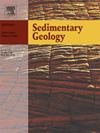Sedimentology and sequence stratigraphy of strike-slip fault-controlled continental lakes: Insights from the SW Qaidam Basin, NE Tibetan Plateau
IF 2.9
2区 地球科学
Q1 GEOLOGY
引用次数: 0
Abstract
Cenozoic sedimentary archives are of great importance for understanding the tectono-climatic evolution of the northeastern Tibetan Plateau. Here, we integrate a detailed field investigation, microscopic observations, unmanned aerial vehicle 3D models, seismic profiles, and transgressive-regressive sequence (T-R sequence) stratigraphy to elucidate the sedimentary and sequence stratigraphy evolution of the SW Qaidam Basin. Three second-order sequences (SS1, SS2, and SS3) were identified based on the unmanned aerial vehicle 3D models and seismic profiles, along with their corresponding underfilled, balanced-filled, and overfilled lake basins. The infilling processes of SS1 and SS2 were significantly influenced by the uplift and strike-slip of the Altyn Tagh Range, paleoclimate variations, and fluctuations of the proto-Paratethys Sea, whereas SS3 was primarily controlled by the intensified uplift and strike-slip of the Altyn Tagh Range. The Altyn Tagh Range experienced multiple stages of uplift, with the incipient strike-slip motion occurring before the Oligocene epoch. Microbialites that formed during periods of relatively high lake level within regressive systems tract act as markers for the maximum regressive surface. Additionally, we propose that these microbialites demonstrate paleoclimate transitions, particularly the climatic shift towards wetter conditions in the Oligocene following their deposition. Newly identified Miocene eolian deposits in the SW Qaidam Basin not only indicate an increasing aridification but also present potential as lithological reservoirs for hydrocarbons.
走滑断控陆相湖泊沉积学与层序地层学——来自青藏高原东北部柴达木盆地西南部的启示
新生代沉积档案对了解青藏高原东北部构造-气候演化具有重要意义。综合野外详细调查、显微观测、无人机三维模型、地震剖面、T-R层序地层学等资料,对柴达木盆地西南部沉积层序地层学演化进行了研究。基于无人机三维模型和地震剖面,确定了3个二级层序(SS1、SS2和SS3)及其相应的欠填、平衡填和过填湖盆。SS1和SS2的充填过程主要受阿尔金山脉的隆升和走滑、古气候变化和原帕拉提斯海的起伏等因素的影响,而SS3的充填过程主要受阿尔金山脉隆升和走滑加剧的控制。阿尔金塔赫山脉经历了多期隆升,渐新世以前就开始了走滑运动。在退潮系统域内,形成于相对高水位时期的微生物岩是最大退潮面标志。此外,我们认为这些微生物岩表明了古气候的转变,特别是在它们沉积后的渐新世气候向湿润条件的转变。柴达木盆地西南部新近发现的中新世风成沉积不仅表明盆地干旱化程度日益加深,而且具有作为岩性油气藏的潜力。
本文章由计算机程序翻译,如有差异,请以英文原文为准。
求助全文
约1分钟内获得全文
求助全文
来源期刊

Sedimentary Geology
地学-地质学
CiteScore
5.10
自引率
7.10%
发文量
133
审稿时长
32 days
期刊介绍:
Sedimentary Geology is a journal that rapidly publishes high quality, original research and review papers that cover all aspects of sediments and sedimentary rocks at all spatial and temporal scales. Submitted papers must make a significant contribution to the field of study and must place the research in a broad context, so that it is of interest to the diverse, international readership of the journal. Papers that are largely descriptive in nature, of limited scope or local geographical significance, or based on limited data will not be considered for publication.
 求助内容:
求助内容: 应助结果提醒方式:
应助结果提醒方式:


